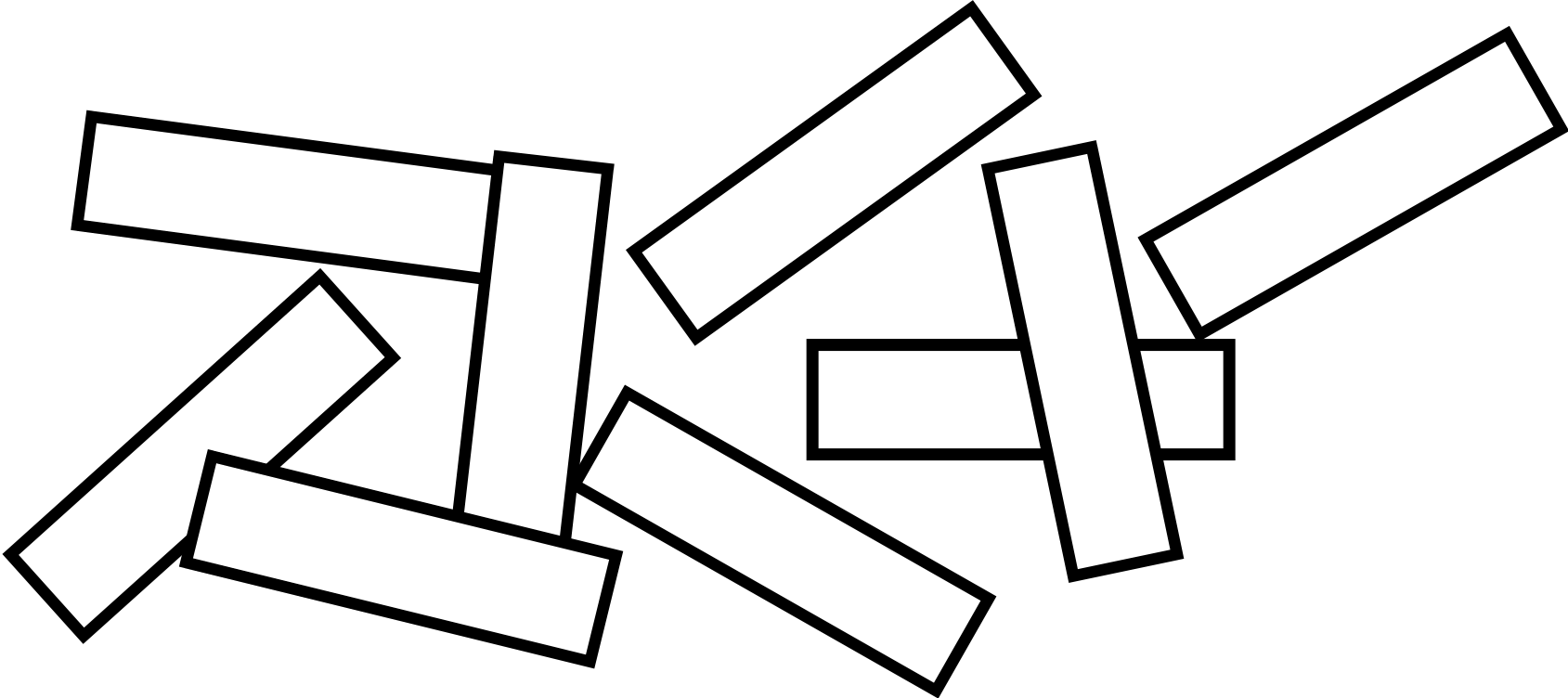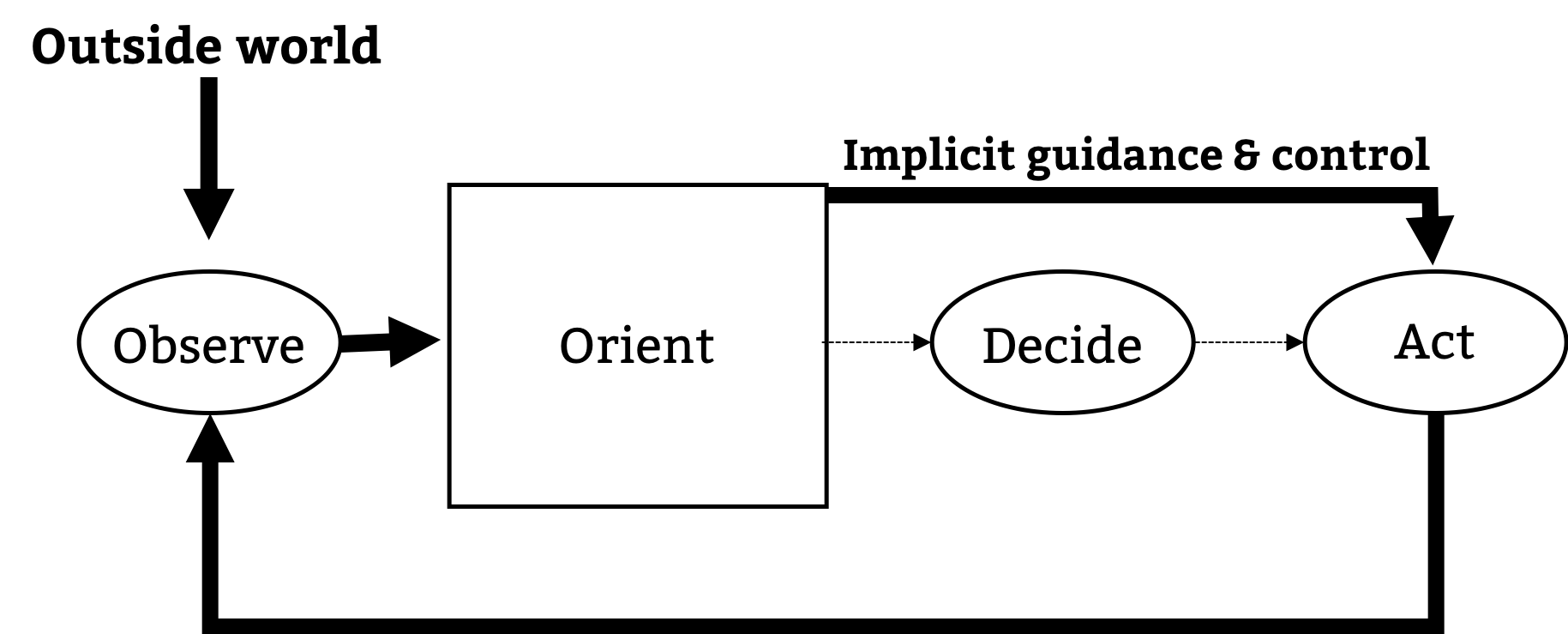Chet Richards’ Certain to Win: The Strategy of John Boyd, Applied to Business dissects historical warfare strategies through the lens of John Boyd’s OODA Loop and derives principles that can be applied to business. Richards argues that we can apply the principles of warfare to the challenges of operating a business because business is a zero sum game played by a “team” in stressful and uncertain situations. Here are the key concepts.
Time
Boyd argues that time is the most effective weapon in your arsenal. Whichever side is able to outmaneuver its competition will be victorious, regardless of conventional firepower metrics. Optimizing for time requires decentralized decision making to avoid bottlenecks. If the people closest to a decision are empowered to do the right thing, you gain a time advantage. The definition of “right” requires a strong vision and mutual trust. Boyd referred to the ability to effectively optimize for time as agility.
Agility
Agility is conventionally defined as the ability to move or think quickly. However, Boyd defines agility as the ability to move or think quickly without becoming disoriented. Agility becomes increasingly important at the trailing edge of strategy. Strategies are based on inevitably fallible models of the world which can never capture every unpredictable detail. If you are unable to react to new sources of information and modify your strategy accordingly, you are doomed to fail. So how do you create agility?
Culture
Boyd argues that to create agility, you first need to build a strong culture. This argument is embodied in his quote “People, Ideas, and Hardware - in that order!” Culture starts with people. Sophisticated hardware is worthless if it’s not being deployed properly. Ideas are worthless if they’re not actionable. Certain to Win outlines the fundamental building blocks of culture via the German military.
Fingerspitzengefuhl
Intuitive knowledge or skill, especially for complex and chaotic situations. Comes from incessant practice in first rote then increasingly complex and challenging situations.
 Individuals with intuitive knowledge or skill.
Individuals with intuitive knowledge or skill.
Einheit
Mutual trust, unity, and cohesion. This can be built through mutual experience.
 A cohesive, aligned group of individuals with intuitive knowledge or skill.
A cohesive, aligned group of individuals with intuitive knowledge or skill.
Schwerpunkt
Any concept that provides focus and direction. This should not be overly specific, but should still provide actionable guidance in ambiguous situations. It should focus on the change your group wants to see in the world (outward), not on the group itself (inward). This is not a plan, just the overarching direction you want your plans to take.
 Schwerpunkt aims the cohesive, aligned group of individuals with intuitive knowledge or skill.
Schwerpunkt aims the cohesive, aligned group of individuals with intuitive knowledge or skill.
Auftragstaktik
This gives everyone in the organization a mission. It is the contract of leadership. It fosters responsibility at every level of the organization through agreements that focus on “what” rather than “how”.
 Auftragstaktik provides the power to move the aligned group towards the schwerpunkt.
Auftragstaktik provides the power to move the aligned group towards the schwerpunkt.
When this culture is in place people are encouraged to take initiative and act, even during periods of chaos or uncertainty. Communication becomes implicit rather than explicit, removing the need for detailed, written instruction. The entire organization begins to think quickly without becoming disoriented.
When people think quickly, they’ll act quickly. Boyd encourages people to take asymmetric fast transient actions. These can be defined as an action taken with the intent to surprise or disorient the competition. Asymmetric fast transients are the premise of Muhammad Ali’s slogan, “float like a butterfly, sting like a bee.” When executed flawlessly, these actions are able to inflict damage without taking any in return. Boyd encourages these asymmetric fast transients to happen more frequently using OODA Loops.
OODA Loops
Observe, Orient, Decide, Act. These verbs compose Boyd’s best known framework. OODA loops encourage you to observe differences between your model of the world and the way it currently is, reorient yourself, brainstorm ideas, and execute them. Execution of ideas modify environments. Environmental changes trigger observations, causing the loop to re-initiate.
 One caveat with the OODA loop is that once fingerspitzengefuhl (intuitive skill) exists, the decide phase of the loop becomes nearly instantaneous.
One caveat with the OODA loop is that once fingerspitzengefuhl (intuitive skill) exists, the decide phase of the loop becomes nearly instantaneous.
When executed more quickly than your competition you can uncover/create and exploit vulnerabilities (think: moving twice in a game of chess for every move your opponent takes). Accomplishing this level of exploitation continuously will inevitably lead to uncertainty, confusion, and disorder in your competition - eroding their einheit. These continued successes will build the einheit of your team and you will become stronger as a result.
Now What?
The book concludes by stating there’s no formula for success, but summarizes succinctly into a few bullet points:
- Understand maneuver warfare. (ex. Toyota Production System)
- Promote leaders who embrace this, remove ones who do not.
- Spread knowledge actively across your organization.
- Transcend boundaries. Do not simply do the same thing faster.